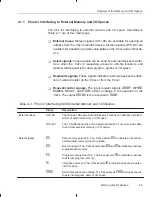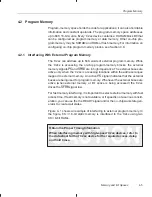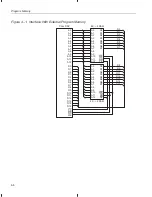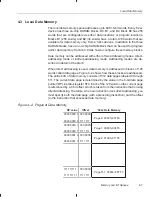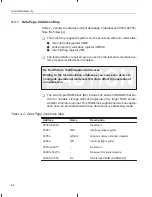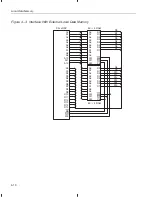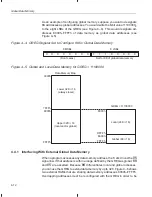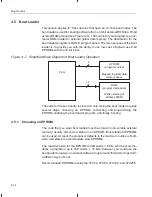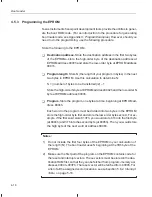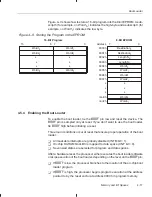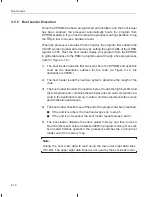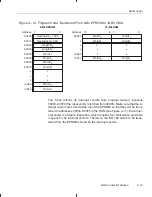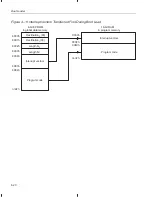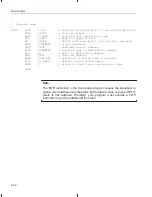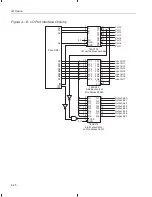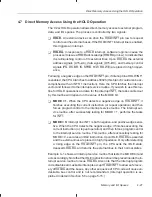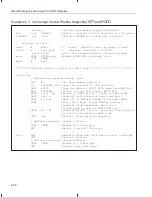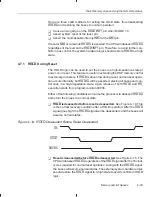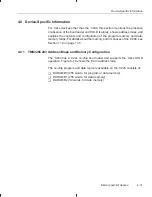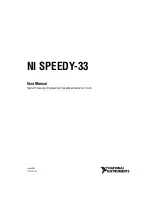
Boot Loader
4-16
4.5.3
Programming the EPROM
Texas Instruments fixed-point development tools provide the utilities to gener-
ate the boot ROM code. (For an introduction to the procedure for generating
boot loader code, see Appendix C,
Program Examples.) However, should you
need to do the programming, use the following procedure.
Store the following to the EPROM:
-
Destination address. Store the destination address in the first two bytes
of the EPROM—store the high-order byte of the destination address at
EPROM address 8000h and store the low-order byte at EPROM address
8001h.
-
Program length. Store N (the length of your program in bytes) in the next
two bytes in EPROM. Use this calculation to determine N:
N = ((number of bytes to be transferred)/2) – 1
Store the high-order N byte at EPROM address 8002h and the low-order N
byte at EPROM address 8003h.
-
Program. Store the program, one byte at a time, beginning at EPROM ad-
dress 8004h.
Each word in the program must be divided into two bytes in the EPROM;
store the high-order byte first and store the low-order byte second. For ex-
ample, if the first word were 813Fh, you would store 81h into the first byte
(at 8004h) and 3Fh into the second byte (at 8005h). Then, you would store
the high byte of the next word at address 8006h.
Notes:
1) Do not include the first four bytes of the EPROM in your calculation of
the length (N). The boot loader uses N beginning at the fifth byte of the
EPROM.
2) Make sure the first part of the program on the EPROM contains code for
the reset and interrupt vectors. These vectors must be stored in the des-
tination RAM first, so that they can be fetched from program-memory ad-
dresses 0000h–003Fh. The reset vector will be fetched from 0000h. For
a list of all the assigned vector locations, see subsection 5.6.2,
Interrupt
Table, on page 5-16.


